Form Layouts
A form is an automatic layout option for perspectives. Forms can show a large number of fields and one-to-many relationships on the screen at one time, without horizontal scrolling.
A typical use case for a form layout is to see all available information about a single customer, user, or other important entity in the database. For example, the following form layout shows data collected as part of a user study, for a single participating user:
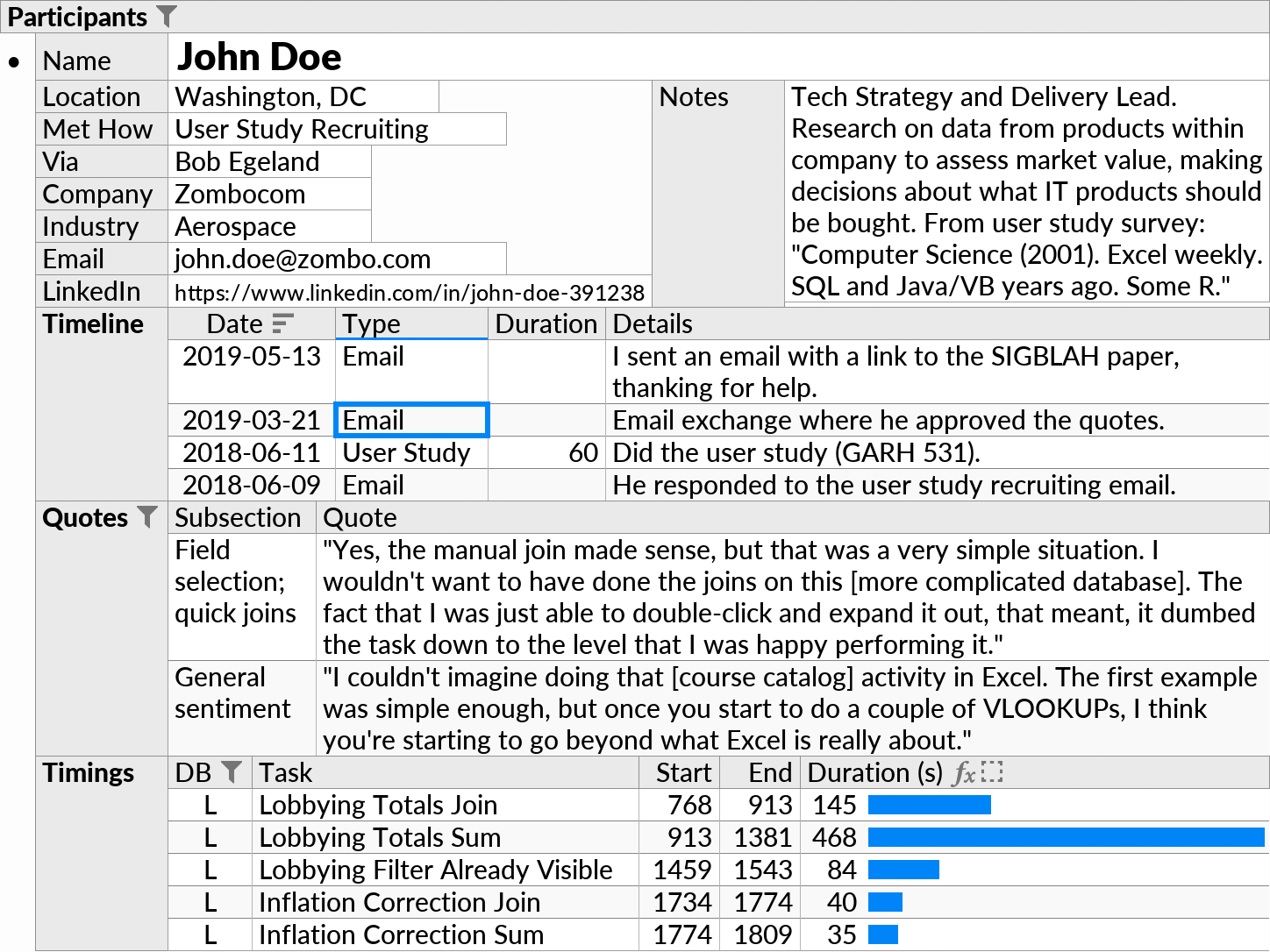
Form layouts stack fields in the vertical direction, with subqueries styled either as a bullet list or as a nested table depending on fields visible and available space.
To use a form layout with the current perspective, select either Form (Single-Column) or
Form (Multi-Column) from the button in the toolbar, or via Format→Set Auto-Layout Type.
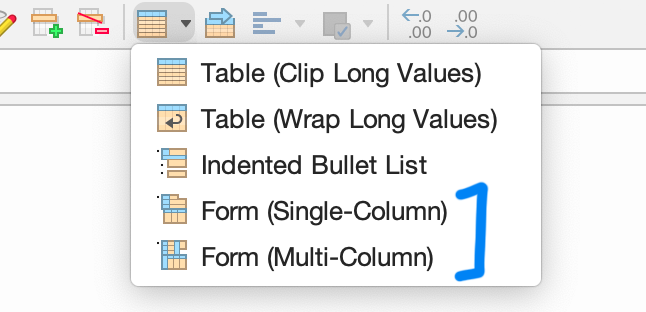
Like in a table layout, you can open the context menu by right-clicking any field, or by clicking the dropdown button () that appears on hover. All of the usual query actions such as sorting, filtering, and grouping are available.
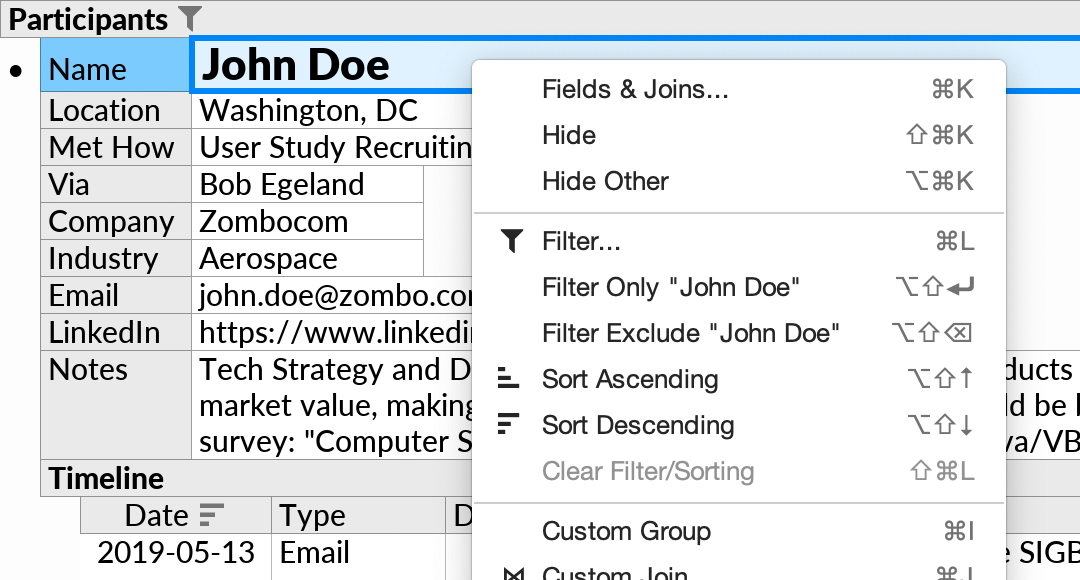
Form layouts are used by default when you open a detail view with the Open Details action.
Layout Variants
Single vs. Multiple Columns
The Form (Multi-Column) variant of the form layout allows narrow fields to be placed in columns side-by-side, thus producing a more compact layout. The optimal column layout is determined automatically, based on statistics such as the average width of values in each field.
For example, the following multi-column form layout distributes the six fields “Location” through “LinkedIn” across two columns:
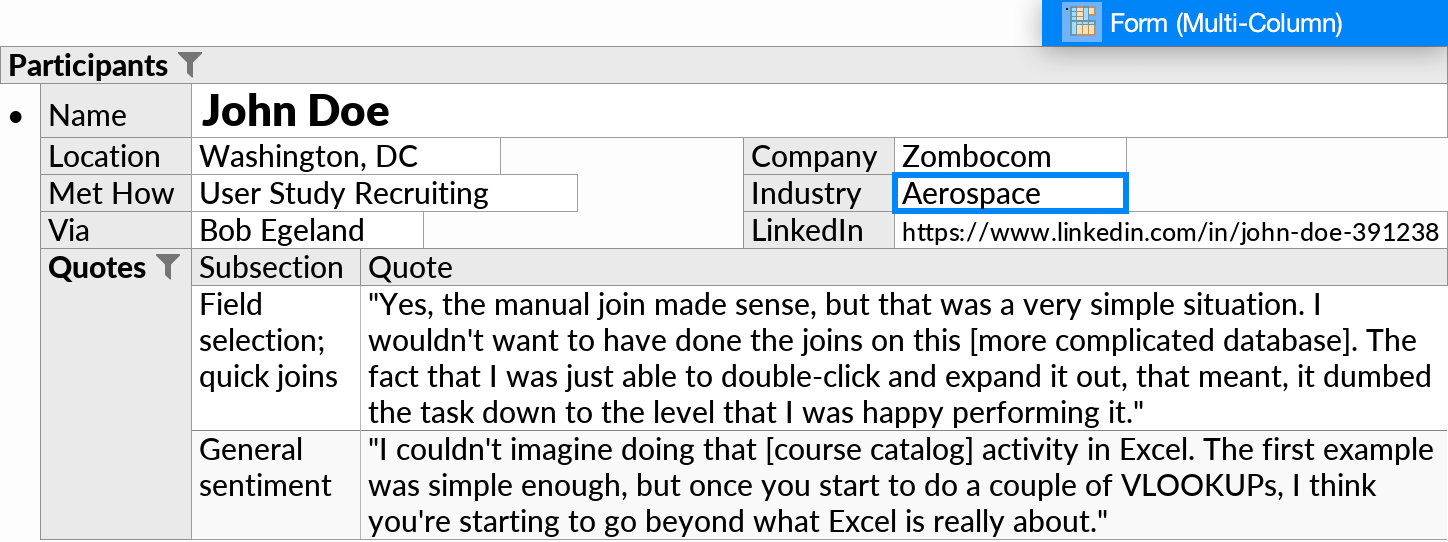
The Form (Single-Column) option, by contrast, arranges fields straight down. This is less compact, but can be easier to read.
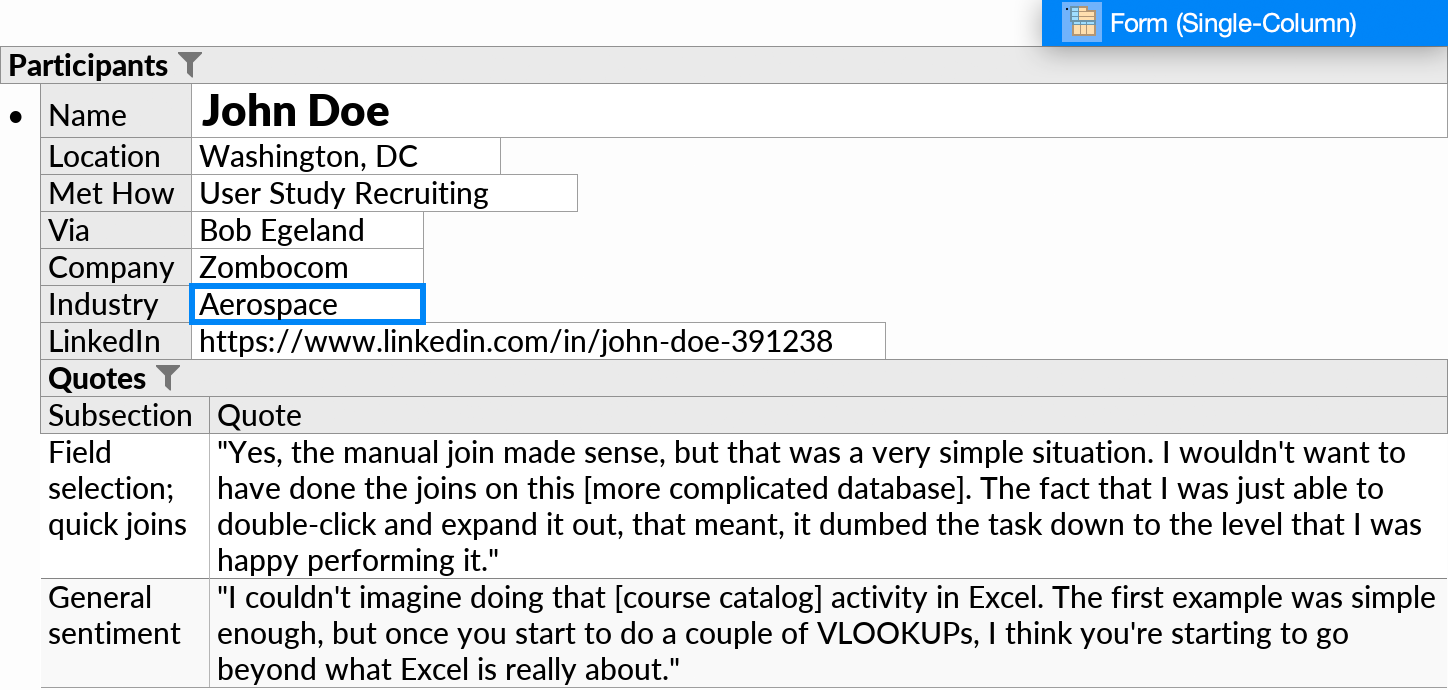
Indented Bullet List
The Indented Bullet List is a simplified version of a single-column form layout. It avoids the use of table layouts in nested subqueries. Instead, bullet lists are used at all levels.
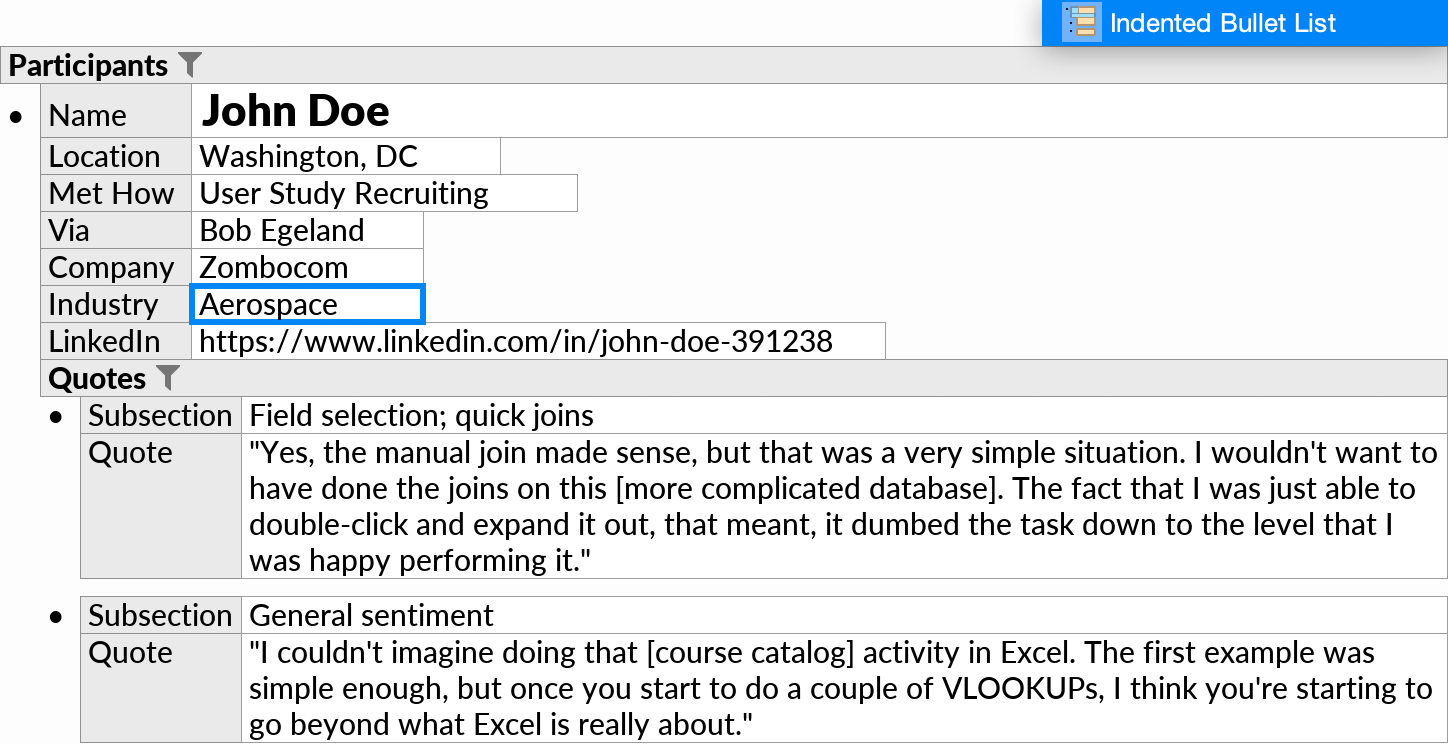
Display Options
Heading Fields
Form layouts may have one or more heading fields, which are emphasized with a larger font for readability. You can choose which field(s) to use via the Heading option in the Format popup:

Heading fields are also permitted to span the full width of multi-column layouts, and stay frozen on top of other content as you scroll up or down.
In the following multi-column form layout, the “Title” field is used as a heading:
If you don't set heading fields explicitly, Ultorg will use heuristics to find a default. For example, fields named “title” or “name”, or similar words in other languages, are good candidates.
Subquery Layouts
Form layouts are generated as a combination of indented bullet lists and nested table layouts, with each subquery using one or the other type of sub-layout.
You can override the type of layout used at any given subquery, by opening the Format popup on the subquery and changing the Sub-Layout Type option.
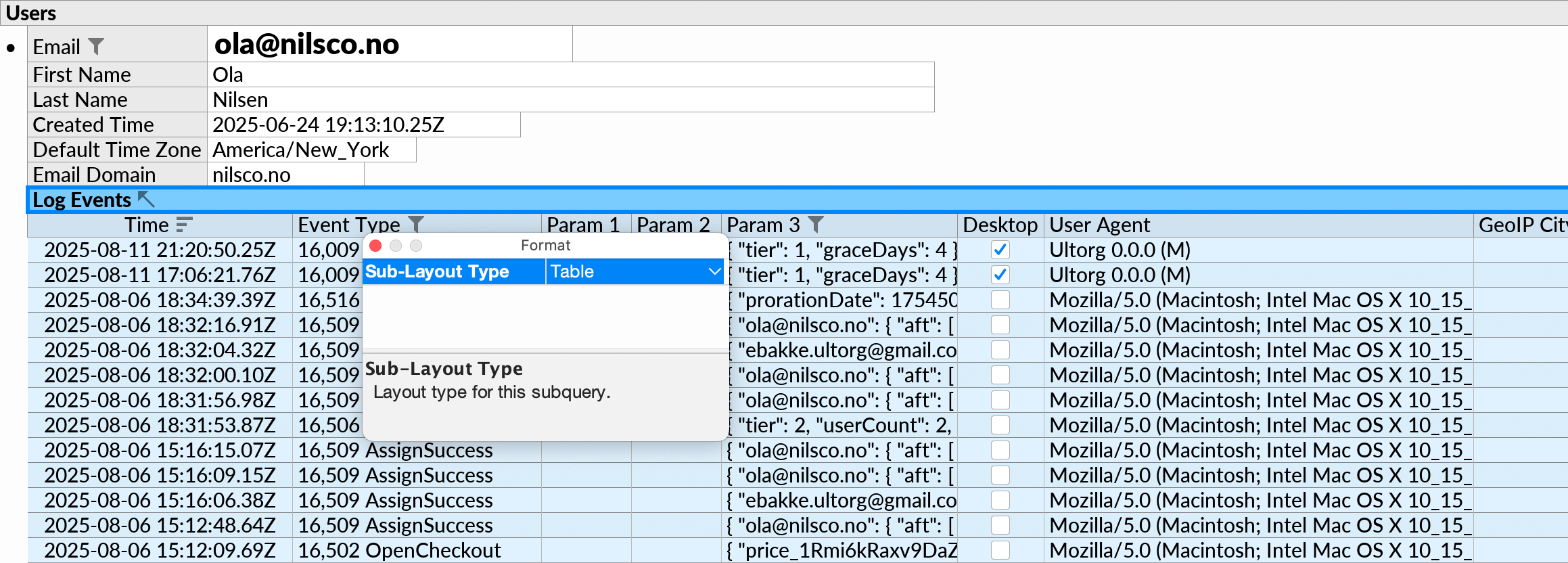
In the example above, the “Log Events” subquery is laid out as a nested table, even though the resulting table is wider than would normally be permitted by the overall form layout.
Page Width
The targeted width of a form layout is determined by the settings in the Page Setup dialog. You can change the Scaling to get a wider or narrower layout.
The form layout will also adapt to fit the width of the perspective editor, if the latter has been made narrow by resizing. This does not affect the layout for print purposes.